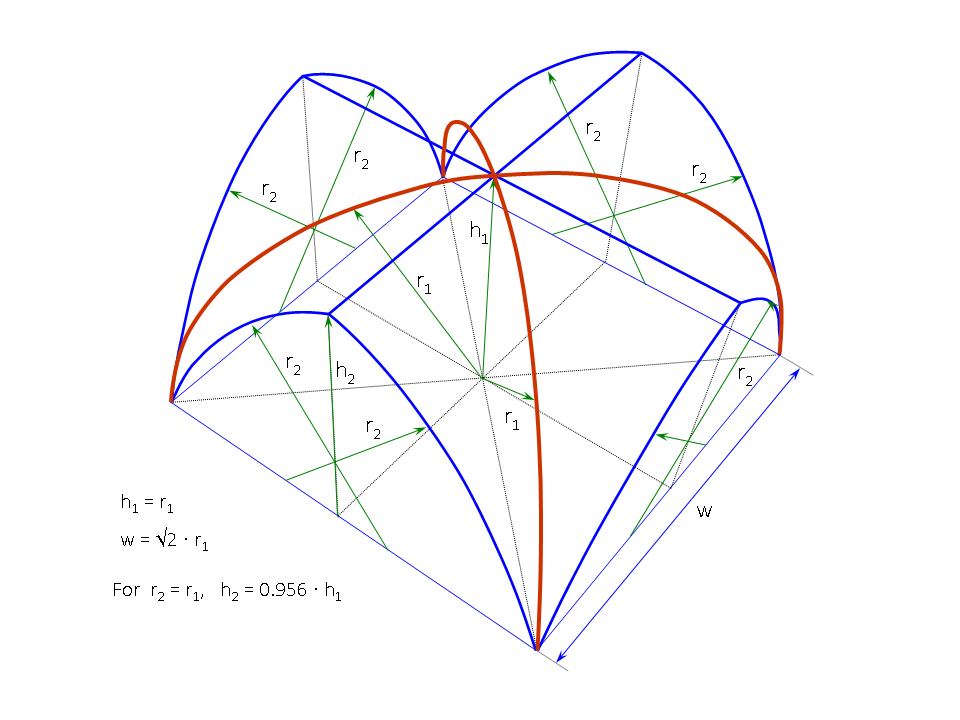Page 7
Web Curvature Distortions
The surface of the vault built in this manner is not a true cylindrical surface. For a cylindrical surface, the transverse arch profile needs to be the correct elliptical curve with the same crown height as the groin arches.
A first distortion comes from the fact that the elliptical profile of the transverse arch is modified and approximated by two circular arch sections.
A second and compounding distortion comes from the crown height of the transverse arch. This height is determined by the choice of the radius and center location for circular arch sections that make up the Gothic form, figure 14 and 17.
One consideration is the radius for the circular sections in the transverse arches, r2, versus the radius for the round groin arches, r1 in figure 17. While these radii can be chose arbitrarily, there is a practical reason for some medieval architect to make them equal.
The curvature of the voussoirs that make up these arches is a challenge for stone cutter; it makes sense to simplifying the job by reducing the number of curvatures to deal with in the project. This simplifies the design, reduces costs, and speeds up construction, which were the motivations in the evolution of cross vault construction that resulted into the Gothic architecture at the height of the Middle Ages.

Figure 17. Geometric relationships between radii and arch heights in Gothic cross vault design.
Making the sides of the Gothic transverse arches with the same radial curvature (r2) as the groin arches (r1) results in transverse arches with a crown height that rise lower than the crown of the groin arches. The crown of the transverse arches is 95.6% of the crown height at the groin arches.
This means that the vault webs taper down from the cross vault center toward the edge of the cross vault square, in correspondence of the transverse arches. The vault webs, measured at the extrados of the arch bands, are 4.4% lower in height at the transverse arch locations compared to the vault at the intersection of the groin arches.
This is a more significant distortion than the approximation of an ellipse by circular arc sections. The resulting web surfaces have a slight funneling effect with a convergence closer to the transverse arches. There are no structural issues with this result, which is nearly imperceptible by naked eyes. It is a consequence of the manner the webs are defined, which is a derivative process with priority given to defining the arch boundaries. The web shape is the resulting surface defined by planks spanning the vault space between groin and transverse arches.
The imperfections resulting from a web built in this manner are not material concerns, they are hardly noticeable. As mentioned already, the primary interest is in the design process and building technique. This approach, which makes the groin and transverse arch bands key framing elements, modularizes and simplifies considerably the building of cross vaults. The simplification, such as reducing the number of curvatures for stone cutters to deal with and the derivative definition of web shapes from predefined rib arches, streamlined the construction process of cross vaults and freed medieval designers to create new and more complex vault forms.

